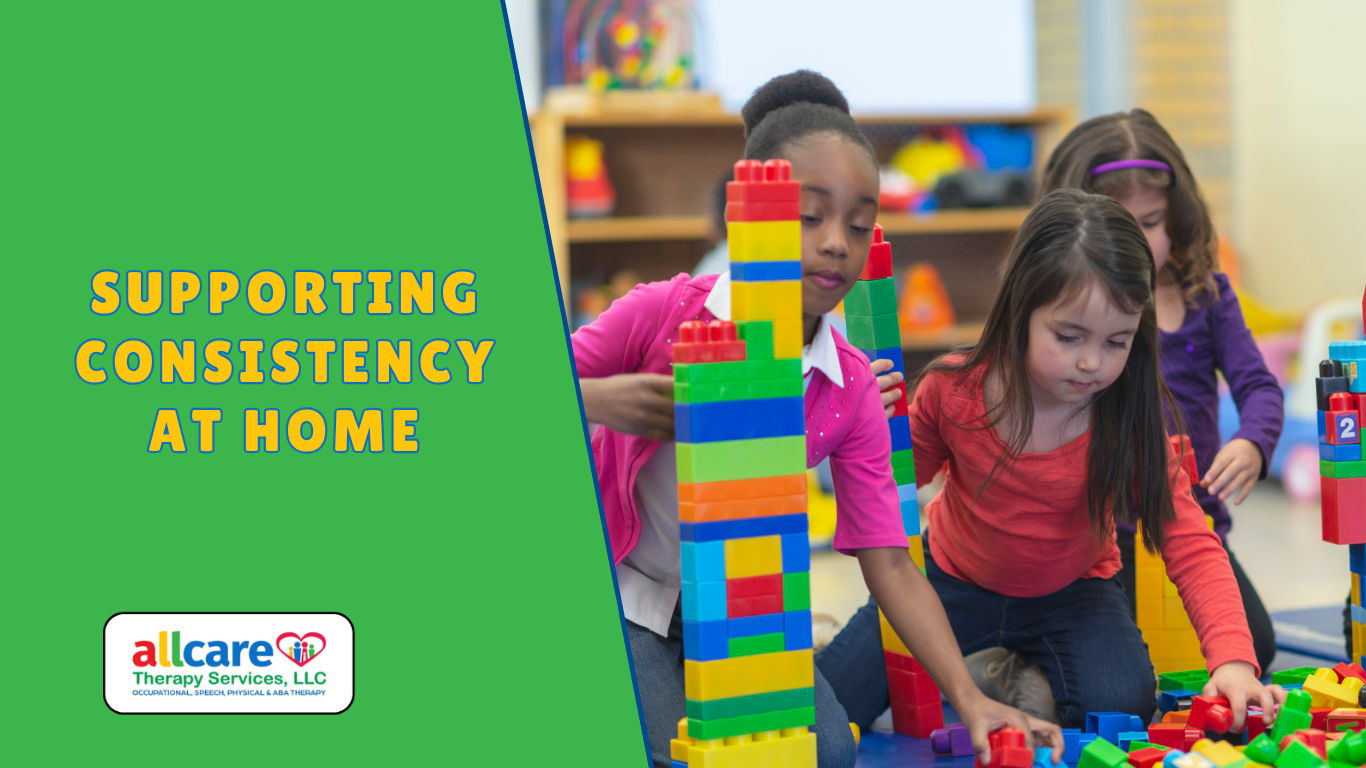Supporting Consistency at Home
October 21, 2025

The Power of Routine
As the leaves begin to change and the initial excitement of returning to school fades, many families face new challenges with their daily routines. While the start of the school year often brings a sense of anticipation and energy, that feeling can quickly diminish as families adjust to busier schedules. Mornings may feel rushed, evenings may be packed, and transitions can be stressful.
October provides an excellent opportunity for families to rebuild structure and routines at home. The seasonal change and the need to adapt to new schedules can be a significant adjustment. The
arrival of fall highlights the importance of consistency for children, especially for those who depend on predictability. Taking the time now to strengthen routines can help everyone navigate the rest of the school year more smoothly.
At Allcare, we understand that consistent routines help children feel safe, prepared, and successful. Here are some simple tips for establishing routines, fostering independence, and building your child’s confidence using proven Applied Behavior Analysis (ABA) techniques.
These strategies can make a real difference in helping your child feel more confident and independent this season, while helping your family create a routine that works for everyone.
Start with Structure, but Keep It Simple
Start by creating a simple structure for your family’s daily routines. Focus on establishing predictable patterns that are easy to follow. Simplicity is key—avoid making routines overly complicated, and instead, prioritize what is most important for your family’s day-to-day needs. Maintain consistent routines, but don’t stress perfection. Even small amounts of structure, when done consistently, make a BIG difference.
Build in Breaks and Choices
Consistency doesn’t mean rigidity. Children also need downtime to rest and recharge. Allow for short breaks and provide opportunities for your child to make choices within the routine. This helps children feel empowered and less resistant to transitions.
Keep Expectations Clear
Communicate your expectations clearly and consistently. When children understand what is expected at each stage of the routine, it reduces confusion and promotes positive behavior.
Children feel calmer when they know exactly what’s expected.
Model Flexibility
Show your child how to stay calm when plans change. Modeling flexibility teaches children how to adapt when things don’t go as planned, building resilience and problem-solving skills. Use
pictures, charts, or visual schedules for routines.
Celebrate Success & Use Positive Reinforcement
Recognize effort and progress! Recognizing positive behaviors motivates children to keep practicing good habits. Adapt routines to your child’s needs, be patient as they learn, and
encourage them along the way—small steps lead to lasting progress. Positive reinforcement means giving your child something they like immediately after they exhibit a
desired behavior, so they’re more likely to repeat it. For example, if your child shares a toy and you praise them or let them choose a favorite activity, they learn that sharing leads to something good—so they’ll want to keep doing it.
Building Lasting Skills Through Consistent Routines
Small, consistent steps lead to significant growth. By breaking routines into manageable parts and reinforcing progress, you help your child build independence, confidence, and self-
regulation.